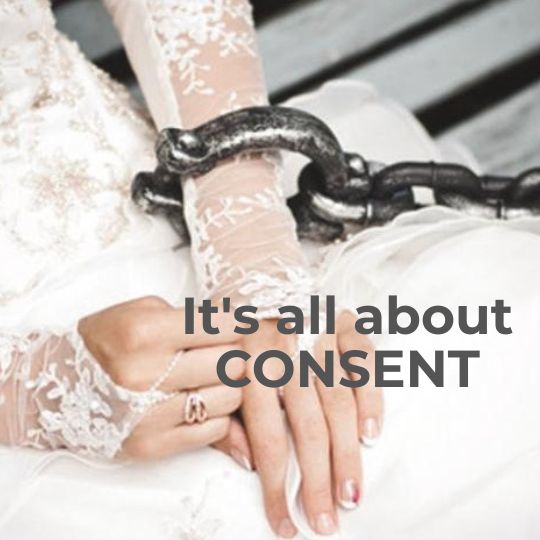Safeguarding Love: Why it's
the law that your celebrant must meet with each of
you separately before you can be married
Categories: | Wedding Legals |
 In a significant move to protect
individual rights and combat modern slavery, last
year Australia introduced a pivotal legal
requirement gor all couples getting married.
Your celebrant must meet separately with each
member of a couple before marriage. Why is this
required? It is all about consent.
In a significant move to protect
individual rights and combat modern slavery, last
year Australia introduced a pivotal legal
requirement gor all couples getting married.
Your celebrant must meet separately with each
member of a couple before marriage. Why is this
required? It is all about consent.
Celebrants have always been required to make
judgements about whether consent given is free and
willing, and where there is any doubt to meet with
the person, and if necessary, refuse to proceed
with the marriage.
What has changed is that we are now required to
meet with both of you to ensure that your consent
to your marriage is real and not forced. Meeting
separately with each of you privately, helps
celebrants to better ensure that every marriage is
consensual and free from coercion.
What is
forced marriage?
by being physically forced, often by being threatened with harm either to yourself or to loved ones by being psychologically coerced, or
by being tricked or deceived
A forced marriage can also occur if the person being married is a child, or is someone who lacks the mental capacity to make the decision to marry. Contrary to common belief, forced marriage is not limited to any particular culture, ethnicity, nationality, or religion or religous sub-group, gender or age, though young females are particularly vulnerable to being forced into marriage.
It cuts across or cultures, takes place in Australia (approximately 1 in 4 cases of human trafficking identified by the AFP in the past couple of years, have involved forced marriage), and for reasons that may surprise you.
I've married several same sex couples where one or both was previously married and divorced and where one or both parties confided that their previous marriage, usually at a young age, was a forced marriage perpetrated by their parents in the hope, or belief, that a heterosexual relationship would "sort them out".
A forced marriage is not the same as an arranged marriage. The critical difference being that, in an arranged marriage, both parties, together with their parents, agree to the marriage.
Regardless of whether the marriage takes place in Australia or the individual is taken overseas, in Australia forced marriage is considered a crime under the Commonwealth Crimes Legislation Amendment Act of 2013
Criminality applies not only to legal marriages. It can apply to civil marriages, cultural and religious ceremonies, and to civil partnerships and registered relationships. And there are severe penalties for anyone, other than the victim, involved.
The meeting
must be face to face
There are good reasons for this, not the least being that, when all the celebrant sees is you on a screen, we have no idea if there is someone else in the room monitoring what you say and controlling your side of the conversation.
The meeting
must be in private
You may
have an interpreter with you
The
meeting is only about your consent
Consent
is in the moment
Related
Information
